Living in the prairie region of the United States surrounded by endless fields of crops, I am struck by the irony of the lack of healthy, reliable sources of food available to low-income individuals. In fact, this problem has been widely recognized as a food desert, characterized by a large population of low-income households who have inadequate access to transportation or other resources that would allow them to gain access to fresh produce and healthy groceries that they can afford. Nutritious food is imperative to maintaining a vital community and overall well-being. Its lack–– particularly in rural and low-income communities–– is a huge problem that is only beginning to be addressed. I am currently working at a non-profit organization based in Des Moines, Iowa, that serves low-income households in several of the state’s counties. IMPACT Community Action Partnership’s mission is to help lessen the burden of poverty by providing funds to help pay bills and access food pantries or gift cards for groceries. However, these resources only cover a portion of the need, and even then, people needing federal and state-provided funding must jump through several hoops to access it. To illustrate this problem, I have examined food inaccessibility in Kellogg, a small town in Jasper County in central Iowa.
Each year, IMPACT surveys families they serve in order to determine what programs are most beneficial to them. The infographic on the next page, taken from the IMPACT needs assessment, shows how 243 families responded when asked “Which food and nutrition needs could you or your family use help with?”
](https://rootstalk.blob.core.windows.net/rootstalk-2022-spring/trissell-3.png)
The small town of Kellog, Iowa, is roughly equidistant from Newton in the West and Grinnell in the east. Image courtesy of Alltrails.com
The Jasper County Health Department also released an overview of the needs assessment it administered to its citizens. According to this report, “obesity (nutrition and exercise)” is a significant issue that needs to be addressed in the community.
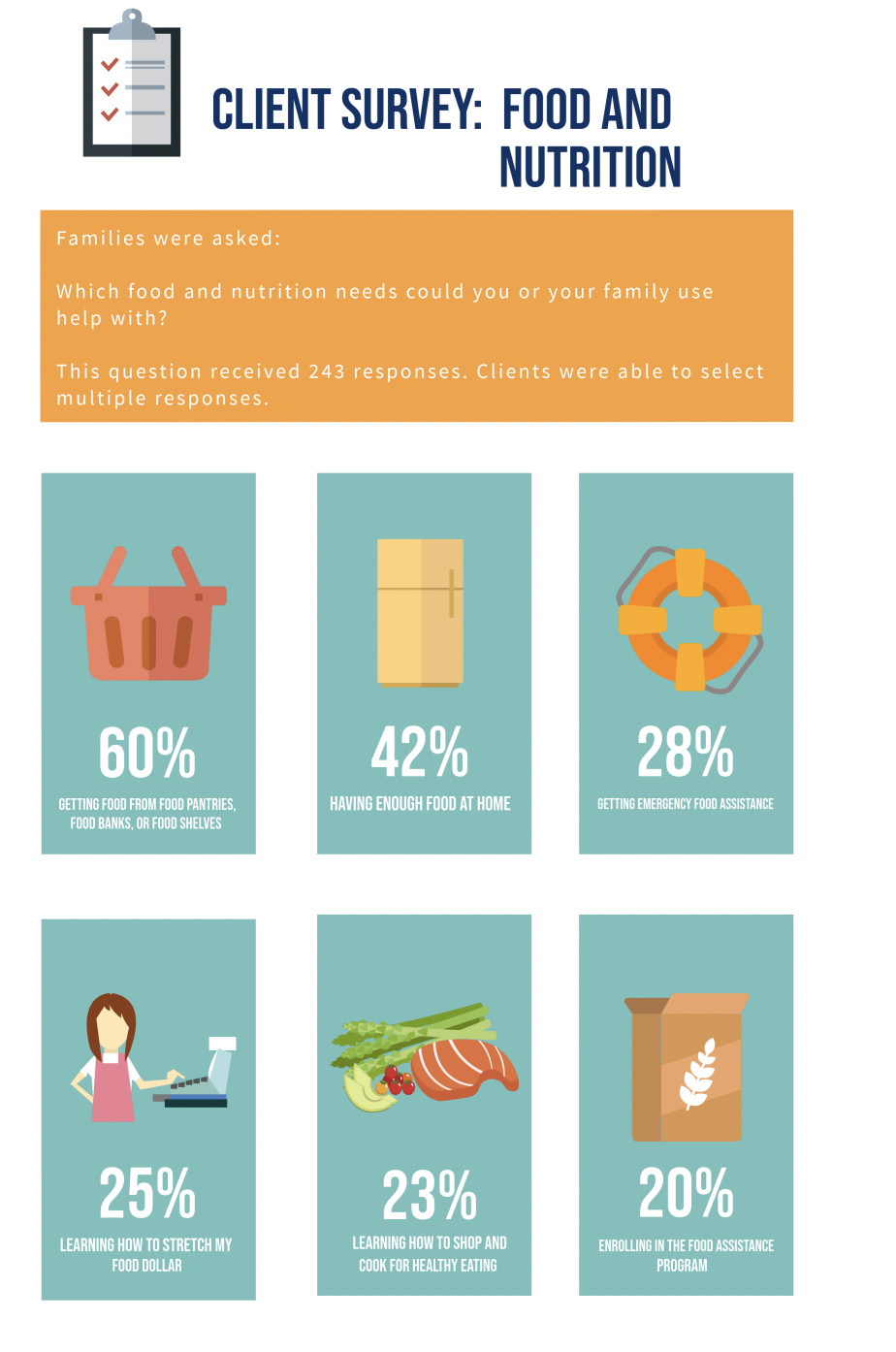
Image from the IMPACT Communnity Action Partnership Needs Assessment for 2019
Jasper County is one of the areas that IMPACT serves. IMPACT provides resources to low-income families in the county, including grocery allowances to spend at local stores. Typically, families have access to IMPACT’s food pantries; however, Jasper County lacks a food pantry, so families there must find grocery stores where they can spend their gift cards. This makes things especially difficult for low-income families in the county’s more rural areas, including Kellogg.
The 2020 Census reported Kellogg’s population to be just 606, a population that has been fairly stable since the 1970s. Currently, there is only one store in town–– a combination gas station and convenience store named Kellogg Country Store. The nearest full-sized grocery stores are found eight miles west of Kellogg, in Newton, and ten miles east, in Grinnell. This means that any time a family needs more groceries or items than are available at the convenience store, they must travel to one of those two towns. Access to transportation sometimes poses a problem.
I made the trip to Kellogg to see what the town is like and to get a feel for the selection of items sold at the Kellogg Country Store. The images accompanying this article are meant to give some notion of the food items offered there.
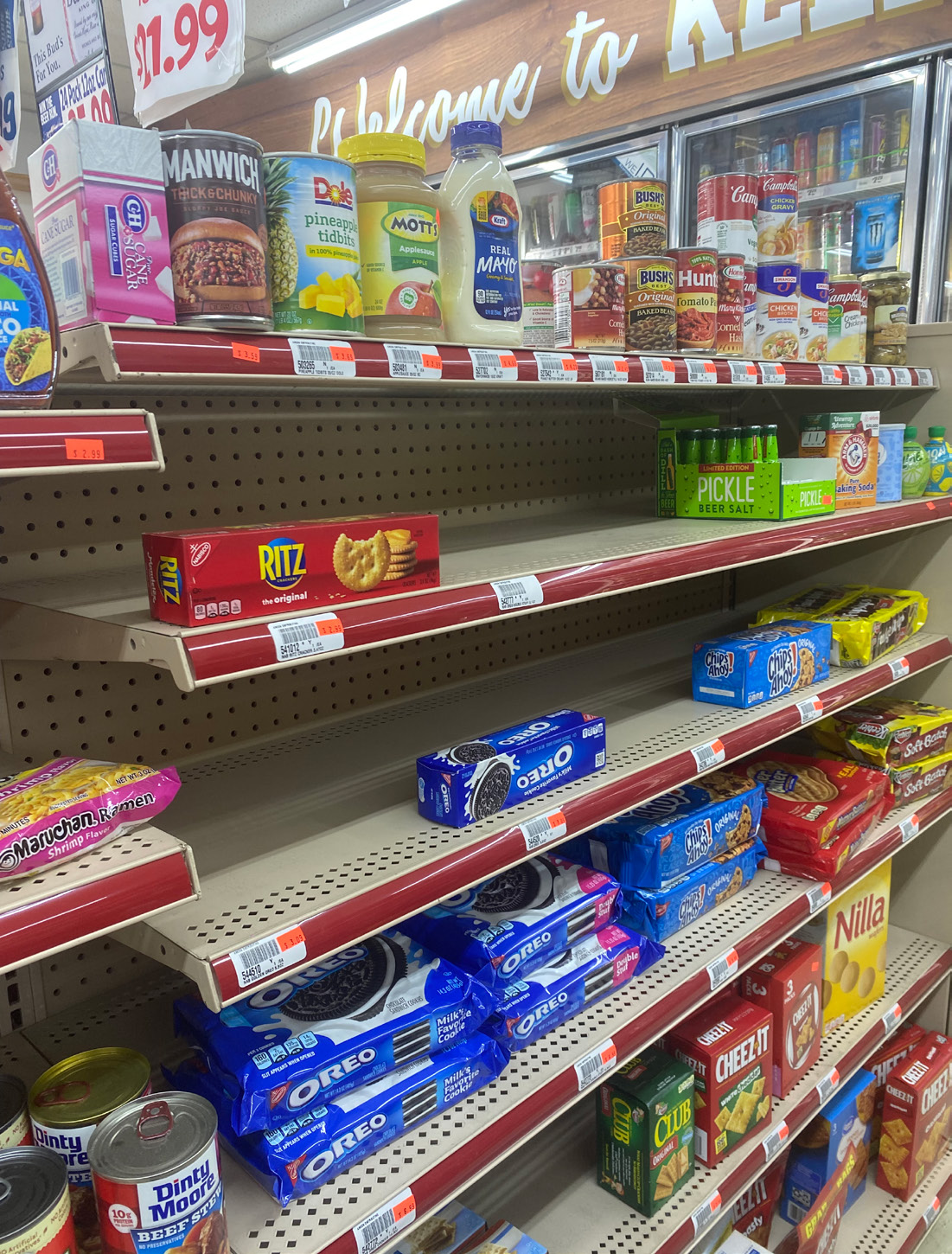
Food choices inside the Kellogg Country Store mostly consist of prepackaged food items with limited nutritional value. Image courtesy of the author
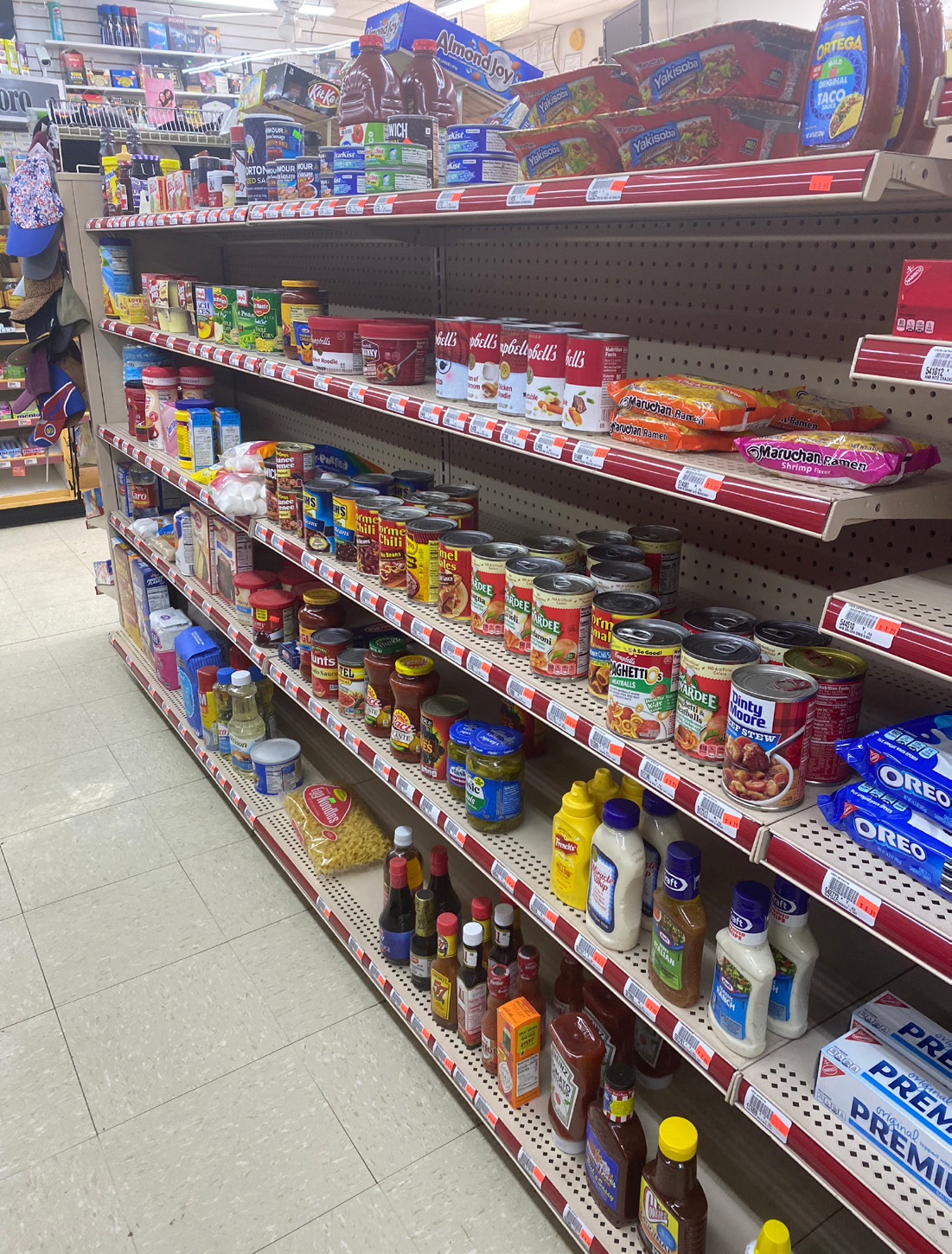
What may not be obvious from the images is the lack of a complete array of healthy foods. There were no fresh fruits, vegetables, or meat. Instead, there was a large variety of canned goods and microwavable instant noodles. The only category of healthy foods being sold were eggs and dairy products. Interestingly, there was a more expansive selection of these than is typically offered at convenience stores. Beyond the foods, there was a larger presence of condiments, cutlery, bags of pet food, laundry soap, and cleaning supplies. This could show the convenience store serves as a means of rectifying the inaccessibility to a local grocery store, or that it takes economic advantage of the situation being that the Kellogg citizens have no choice to make purchases from there if they cannot make a trip to Newton or Grinnell.
Even the signage outside of the gas station communicates that they carry products that somebody could need when they are not able to get out of the town.

The Kellogg Country Store on March 15, 2022. The store offers gas, access to an ATM, liquor, bait, ice, and–finally–hot food and groceries. Note where food items are on the list. Image courtesy of the author
As this makes obvious, the Kellogg Country Store does offer a larger variety of items than most other convenience stores, but does not provide local, low-income families who have limited transportation options access to a reliable supply of nutritious food. It is clear that the lack of a grocery store in rural Kellogg is a problem for the local population. Beyond this simple fact is an unanswered question: Why can’t the people of the region just live off of the food grown nearby?
To further contextualize the issue of food inaccessibility and discuss the reasons why, in an area with so much land under agricultural production, food accessibility is a critical issue, it is useful to look more deeply into demographic information. There are three main types pf farming: livestock, crop, and horticulture. In central Iowa, a majority of the land is dedicated to crop farming, whereas food fit for direct human consumption is classified as horticulture farming. According to the 2020 census, the total population of Jasper county is 37,813. An analysis of the “County Summary Highlight” section of the 2017 agricultural census shows that Jasper County has a total of 986 farms, with a total of 378,175 acres of farmland. However, and the key point, most of the land is allocated to crops that cannot be directly consumed by humans. The crops primarily harvested in Jasper County are soybeans, corn for grain, corn for silage or green chop, and oats for grain. Little land in central Iowa is allocated to horticultural farming. This accounts in large part for why low-income people are not able to easily access nutritious foods.
Access to nutritious food is vital to maintaining a community and ensuring all members of the community are well-taken care of. Gaining access to reliable food sources should not fall on the shoulders of the consumers, nor on the local food producers. Solving this problem will take more than small overnight changes; there will have to be larger systemic changes before we can see a difference.
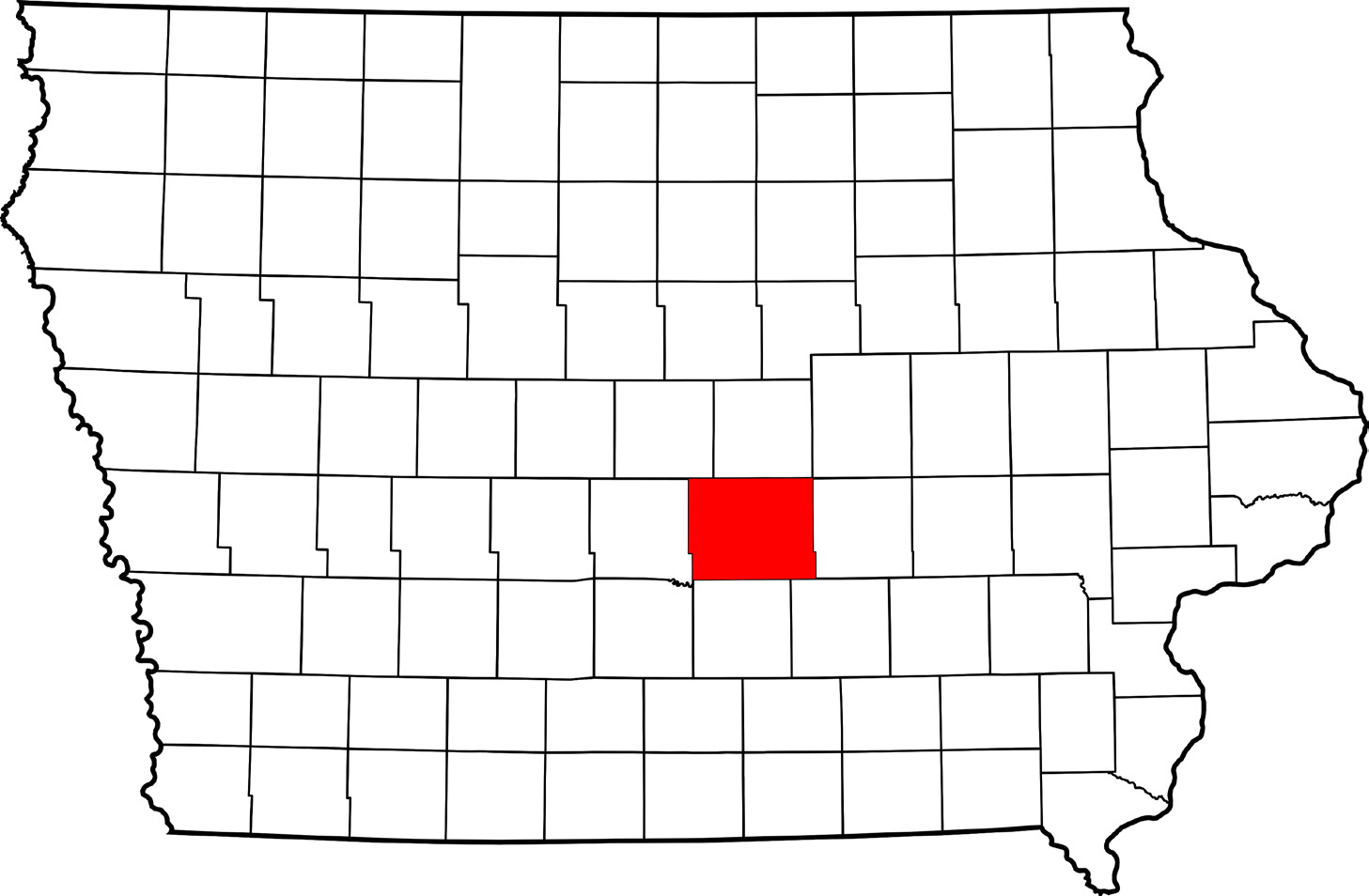
Kellogg is located in Jasper County, Iowa. Image courtesy of Wikimedia Commons.
What Do Iowa Farmers Think about Food Deserts in Their Area?
Some people have proposed that backing away from the industrial food production system and moving towards more local food sources could solve this problem. To gain insight into this possibility, I reached out to Suzanne Castello and Barney Bahrenfuse, whose farm operation near Kellogg, Iowa is largely dedicated to raising livestock.
Castello and Bahrenfuse primarily raise beef, sheep, pork, and chickens on their farm. They farm on the entire 450 acres they own, and also farm on an additional 40 acres that they rent. Castello said they have equal amounts of crop ground and grazing pasture for their animals, and they are currently trying to integrate grazing into their land dedicated to crops as well. A majority of the crops grown on Castello and Bahrenfuse’s farm are fed to their livestock, but they also grow organic soybeans to sell on the market. Their family farm is especially unique in that they do not use pesticides when growing their crops, and they practice regenerative farming. Castello said that each year, they try to increase the number of acres on their farm that are certified organic. Right now, they have 142 acres of certified organic crops. Castello’s and Bahernfuse’s farming strategies allow them to regenerate the soil and the surrounding environment, so the land can be advantageously managed in order to prioritize healing the earth as well as providing for themselves and their livestock.
This is a balance that each farmer is forced to navigate—maintaining an economically sustainable farm and caring for the earth so that its resources can be used for generations to come. Trying to walk the line between making a living and prioritizing regenerative farming practices proves to be an issue for all farmers interested in sustainable farm management, not just for Castello and Bahrenfuse. More sustainable farming practices require much more time and financial investment, and can sometimes lead to smaller profit margins for the farmers. Through no fault of the food growers and producers, locally-sourced and organic food is typically more expensive, and therefore still remains inaccessible to low-income families who are experiencing the phenomenon of food deserts. This means that low-income families are then forced to buy the cheapest, and often least sustainably grown, food from larger corporations that can afford to lower the market prices.
As Castello pointed out, addressing the issue must start with larger systemic changes such as increasing the wages that low-income families are paid or creating more opportunities for local food to be distributed. Another issue concerns the knowledge that farming requires. Traditionally, such knowledge is passed on from one generation to the next and applies to particular parcels of land. In other words, the knowledge is local. As Iowa agriculture becomes increasingly industrialized and corporatized, the local knowledge becomes less relevant and with it the possibility of a more local food system.
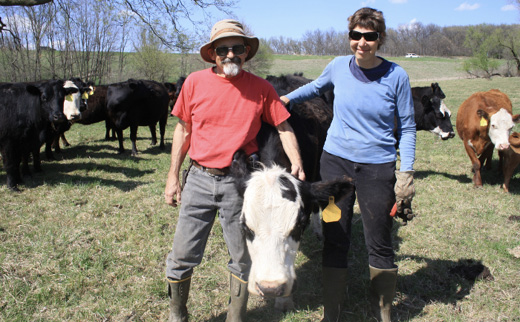
Barney Bahrenfuse and Suzanne Castello on their land outside of Kellogg, Iowa, where they raise livestock including beef cattle, sheep, pork and chickens. In their estimation, solving the food desert problem will take more than planting human-consumable food crops. It will take low-income families being paid a living wage, expanded opportunities for local food distribution, and the preservation of farming wisdom that should be passed on from one generation to the next.


